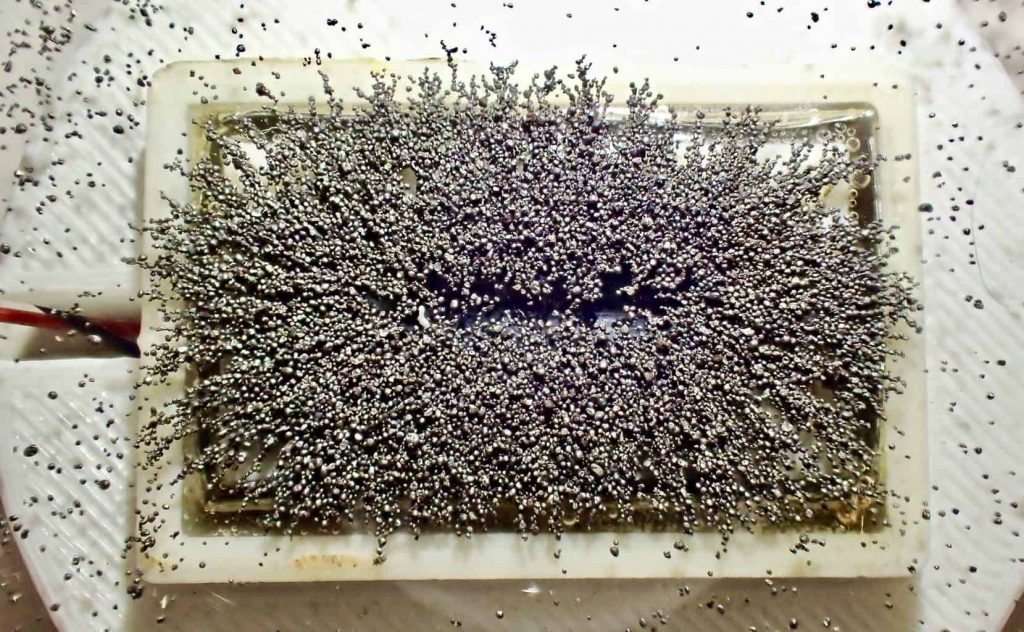Houston’s Materials Experts: Testing for Magnetic Permeability per ASTM A342
Magnetic permeability testing is a non-destructive method used to measure how a material responds to a magnetic field. Specifically, it evaluates a material’s magnetic permeability, which is its ability to support the formation of a magnetic field within itself.

What is Magnetic Permeability?
Magnetic permeability is a material property that describes the ability of a material to conduct magnetic fields. It measures the degree to which a material can be magnetized and how easily magnetic flux passes through the material. The magnetic permeability of a material depends on its composition, structure, and external conditions such as temperature and magnetic field strength. Magnetic permeability is an important property in a variety of industries, including electrical engineering, materials science, and physics, and is used to design and optimize devices such as transformers, motors, and sensors.
In many applications, the magnetic permeability has an enormous impact on the operations. This especially holds true in areas like drilling and medical devices, where magnetic fields can be detrimental or even deadly.
Why It Matters
- Quality Control: Confirms that metals and alloys meet required specifications for performance.
- Safety & Reliability: Ensures materials can withstand operational demands without unexpected failures.
- Industry Compliance: Meets industrial standards and regulations, such as those set by the oil & gas, aerospace, and power generation sectors.
How to Test for Magnetic Permeability
Magnetic permeability is a measure of a material’s ability to conduct magnetism. It is an important property for materials used in electrical and magnetic applications. There are several methods for testing magnetic permeability, but the most common method is the magnetic balance method, also known as the Gouy method.
The magnetic balance method involves suspending a sample of the material to be tested in a magnetic field and measuring the force exerted on the sample by the field. The force is proportional to the magnetic field strength and the magnetic permeability of the material. The sample is typically in the form of a thin strip or wire, and is suspended between two poles of a permanent magnet.

Image by Far From Home
ASTM A342 Magnetic Permeability Testing
There are numerous methods for ASTM A342 magnetic permeability testing. Some directly measure the permeability, while others compare it with baseline calibration materials.
Method A – To perform the test, the sample is first demagnetized to remove any residual magnetization. It is then suspended between the magnet poles and a calibrated weight is added to the sample to balance the force exerted by the magnetic field. The weight required to balance the force is then measured and the magnetic permeability of the material is calculated using the following equation:
μ = F / (B x l x A)
Where μ is the magnetic permeability, F is the weight required to balance the force, B is the magnetic field strength, l is the length of the sample, and A is the cross-sectional area of the sample.
Other methods for testing magnetic permeability include the permeameter method, which measures the magnetic induction in a sample subjected to a known magnetic field, and the ferromagnetic resonance method, which measures the resonance frequency of a sample subjected to a magnetic field.
How Magnetic Permeability Testing Works
. Preparation
- Surface Cleaning: The testing surface should be free from contaminants (oil, grease, scale).
- Calibration: Instruments must be properly calibrated using known standards to ensure accurate readings.
2. Measurement Process
- Equipment: A magnetic permeability meter (often called a “mu meter”) is placed on or near the material’s surface.
- Magnetic Field Induction: The device generates a magnetic field, and sensors measure how the material responds to that field.
- Data Interpretation: The instrument provides quantitative readings reflecting the magnetic permeability (usually relative to air).
3. Analysis & Reporting
- Compare to Specifications: Results are matched against engineering requirement, or industry standards. These are usually dictated by regulations or the end customer.
- Recommendations: If anomalies are found, further investigative testing or remedial actions (e.g., heat treatment, repairs, or replacements) may be recommended.
Uses for Magnetic Permeability Testing
Overall, testing for magnetic permeability is an important step in evaluating the magnetic properties of a material and is essential for designing and optimizing electrical and magnetic components and systems.
For most applications, we use A342 Method C the well–documented Severn gage measurement to evaluate the surfaces of materials for magnetic permeability or method D, the more accurate electronic measurement process. In most cases, our Houston laboratory can offer results in less than 24 hours when you need immediate answers.